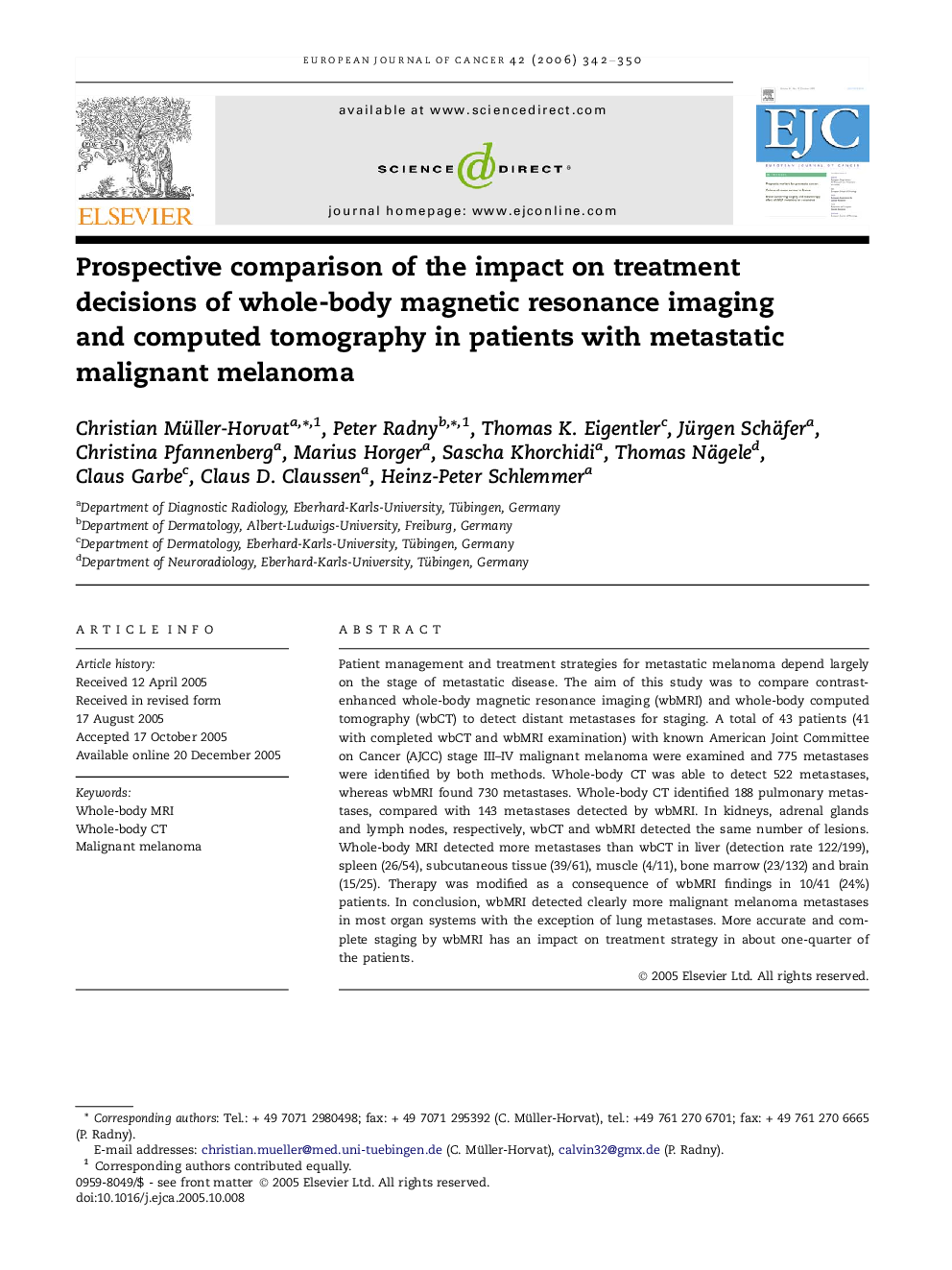| Article ID | Journal | Published Year | Pages | File Type |
|---|---|---|---|---|
| 2126129 | European Journal of Cancer | 2006 | 9 Pages |
Patient management and treatment strategies for metastatic melanoma depend largely on the stage of metastatic disease. The aim of this study was to compare contrast-enhanced whole-body magnetic resonance imaging (wbMRI) and whole-body computed tomography (wbCT) to detect distant metastases for staging. A total of 43 patients (41 with completed wbCT and wbMRI examination) with known American Joint Committee on Cancer (AJCC) stage III–IV malignant melanoma were examined and 775 metastases were identified by both methods. Whole-body CT was able to detect 522 metastases, whereas wbMRI found 730 metastases. Whole-body CT identified 188 pulmonary metastases, compared with 143 metastases detected by wbMRI. In kidneys, adrenal glands and lymph nodes, respectively, wbCT and wbMRI detected the same number of lesions. Whole-body MRI detected more metastases than wbCT in liver (detection rate 122/199), spleen (26/54), subcutaneous tissue (39/61), muscle (4/11), bone marrow (23/132) and brain (15/25). Therapy was modified as a consequence of wbMRI findings in 10/41 (24%) patients. In conclusion, wbMRI detected clearly more malignant melanoma metastases in most organ systems with the exception of lung metastases. More accurate and complete staging by wbMRI has an impact on treatment strategy in about one-quarter of the patients.
